Boats go around the earth
This happened in the era of great accomplishments and grandiose breakthroughs in all spheres of human existence. Faster, higher, stronger! On the ground, under water and in the air.
On February 16, 1960, the mooring of the New London Naval Base (Connecticut) left the Triton nuclear submarine. The ship went to sea with a fantastic mission - to repeat the route of the great Magellan, remaining underwater throughout the campaign. Having passed an invisible shadow through the seas and oceans of the planet and circled the globe without a single ascent or call to the port, the Triton was to be a direct proof of the technical superiority of the nuclear submarine fleet US Navy.
Behind the loud propaganda was a small secret. The general public is not aware that the "Triton" - the only American submarine capable of making an underwater round-the-world "cruise". All other submarines of the first generation - "Skate", "Nautilus", "Sivulf" are too slow and weak to participate in round-the-world operations.
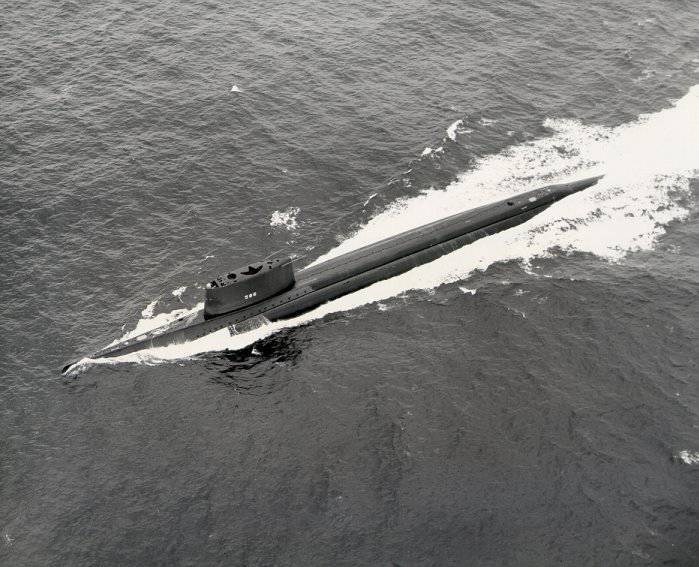
The USS Triton submarine (SSN-586) was specifically designed for extended ocean trips. The largest, fastest and most expensive submarine in the world ($ 109 million, including nuclear fuel), designed to perform the functions of a radar patrol and control of naval battle groups aviation. In the postwar years, radar detection in the US Navy was provided by specially trained destroyers, however, as the practice of the Second World War showed, such a solution meant a high risk for surface crews. The submarine was deprived of this drawback - when detected by the enemy, the Triton deftly dived under water and disappeared into the deep sea. Special features required special skills, hence the considerable size *, two-reactor layout and high speed of underwater travel (27+ knots). And also six torpedo tubes of 533 mm caliber - in case of danger, the triton turned into a malicious poisonous dinosaur.
* Everything in the world is relative. From the point of view of our days, the size of the "Triton" corresponds to a modest multipurpose boat, and in comparison with the huge "Shark" the American "Triton" seems to be a midget (7 vs. 50 thousand tons of underwater displacement)
... Meanwhile, the Triton boldly walked into the middle of the Atlantic, shaking the whole body on a steep ocean wave. February 24, the boat arrived at the rocks of Peter and Paul, where it was supposed to start historical swimming. The last time they ventilated the compartments and threw overboard the accumulated household garbage, the submarine buried itself in piercing blue waves in the equatorial part of the Atlantic Ocean.
Having descended into the southern hemisphere, the Triton rounded Cape Horn and rushed to the west, crossing the oblique Pacific Ocean. Passing close straits between the islands of the Philippines and Indonesia, the boat climbed into the Indian Ocean, then rounded Africa around the Cape of Good Hope and returned to the control point of the route to the Peter and Paul rocks 60 days and 21 an hour after the start of the expedition. 23 723 nautical miles (49500 km - more than the length of the Earth's equator) remained behind the stern of the "Triton".
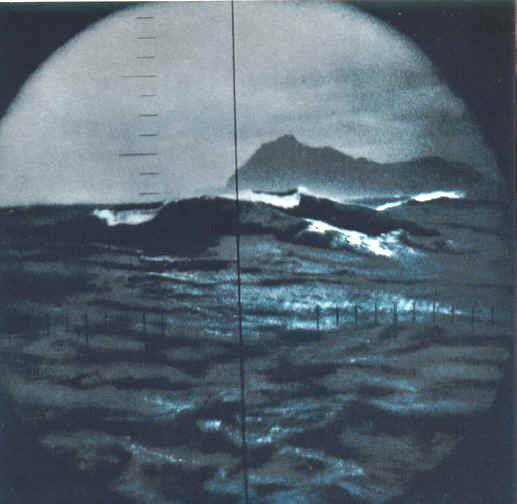
The official history indicates that a “clean” record did not work out - the submarine had to rise once to the surface off the coast of Uruguay. During a short rendezvous with the American cruiser Macon, one sick sailor from the crew of the submarine was transported aboard the cruiser. In addition, evil tongues say that the Triton repeatedly violated the conditions of the marathon by going to the base on the island of Guam to eliminate malfunctions on board. Of course, there is no official confirmation of this event and all this is nothing more than vile slander ...
During the march (called Operation Sandblast), in addition to purely propaganda tasks, American sailors conducted numerous studies in the interests of the US Navy. The covert survey methodology was tested (the crew surveyed the British Falkland Islands and its own Guam naval base), conducted exercises to combat the survivability of the boat (during one of them the situation with the drop in power of both reactors was worked out - was it a planned training or a consequence of a real accident, the question remained unanswered). In addition, using a powerful sonar "Triton" conducted a continuous scan of the relief of the ocean floor throughout the route of the American submarine.
The hike was accompanied by major technical problems, each time endangering the fate of the expedition. In the compartments more than once there were leaks and smoke, the alarm was triggered by the reactor. 12 March 1960 of the year, the main echo sounder “covered” with the boat, and on the last day of the trip the whole hydraulic system of the stern rudders control failed - the Triton returned to the base on the reserve control.
It is worth noting that there was no secrecy around the Triton expedition. During the march on board the boat, there were two dozen civilians, including the photo reporter for National Geographic magazine. The Yankees turned a strategic round-the-world raid into a vivid PR show and tried to maximize the "spin" achievement of the US Navy, raising the notorious "prestige of the nation."
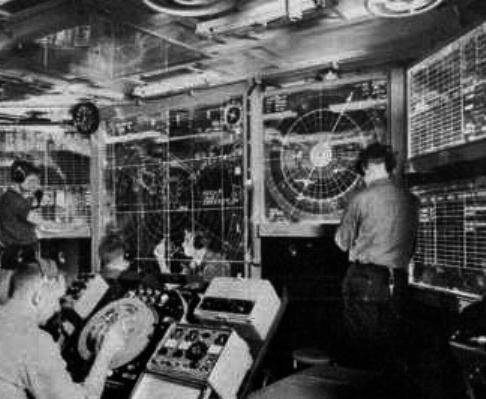
As for the “record holder” himself, “Triton” has never been used for its intended purpose - as a command center for monitoring the situation in the air. From the beginning of the 1960-s, specialized DRLO aircraft assumed the functions of long-range radar detection, and the unique, unique in its class, submarine was retrained in a multipurpose boat with a torpedo weapons.
In total, the USS Triton served under the stars and stripes of the 27 flag for years and was excluded from the US Navy lists in the 1986 year. The once formidable underwater killer was finally cut into metal by November 2009.
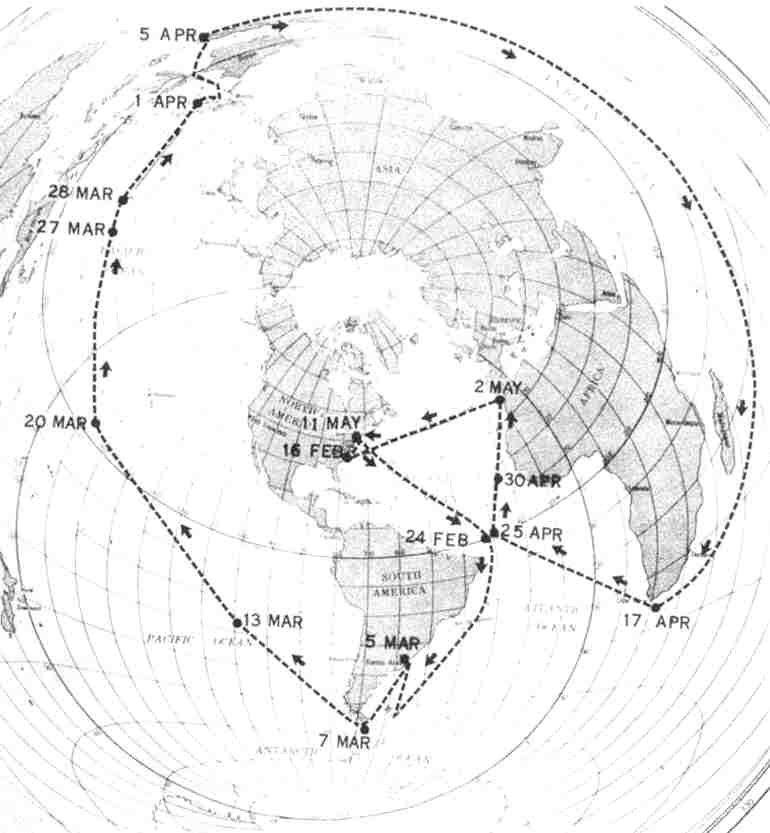

In total, around the world, two hundred people from the crew of the submarine "destroyed" 35 tons of food
Despite all sorts of discussions around the “white spots” in the history of the Triton’s circumnavigation, and the occasional accusations of violations of the conditions of the swim, the 1960 round-the-world underwater expedition was yet another proof of the unique capabilities of nuclear submarines. The "Triton" campaign had a powerful influence on the escalation of the "arms race" and contributed to the rapid development of the nuclear submarine fleet on both sides of the Atlantic Ocean. Many have become agitated in the General Staff of the Navy of the USSR - the Triton submarine march was regarded as a direct challenge from the United States.
And, as you know, Soviet sailors are accustomed to respond to the challenge with an even tougher answer ...
Race for survival
In the spring of 1960, the Americans showed who is the master in the oceans. A year later, the Russian guy Yura Gagarin will show overwhelmed the Yankees, who is the master in Space.
But the record of the Triton submarine remained unbroken. Frankly, the USSR Navy had no tasks to conduct round-the-world cruises of nuclear submarines. The Soviet sailors had neither the strength nor the means to conduct large-scale PR actions, similar to the Triton campaign - to remove nuclear ships from combat duty for the sake of “chasing records” was an unaffordable luxury. The oceans plied the giant fleet of a “probable enemy” out of a thousand warships - the Soviet Navy had enough adrenaline in the pursuit of elusive American AUG and George Washington type bomber. Instead of posing in National Geographic magazine, our sailors were busy delivering ballistic missiles to Cuba and setting up anti-submarine barriers in the path of four dozen "city killers" threatening to bring thermonuclear polaris from the 656 missiles to Soviet cities.
And yet, after a few years, the North Sea seamen had an opportunity to get even with the American seamen. In 1966, the need arose to transfer the K-133 and K-116 nuclear submarines from the Northern Fleet to the Pacific Ocean. And if so, it remains only to approve the route, pick up the crews, load the expenditure and food, and ... Full speed ahead, on a long hike!
By this time, Soviet submariners had accumulated considerable experience in long trips to remote areas of the World Ocean - even in 1962, the K-21 submarine made 50-day combat march to full autonomy, having passed 10124 nautical miles (of which 8648 miles underwater ). For a more comfortable perception, this is equivalent to the distance from St. Petersburg to Antarctica.
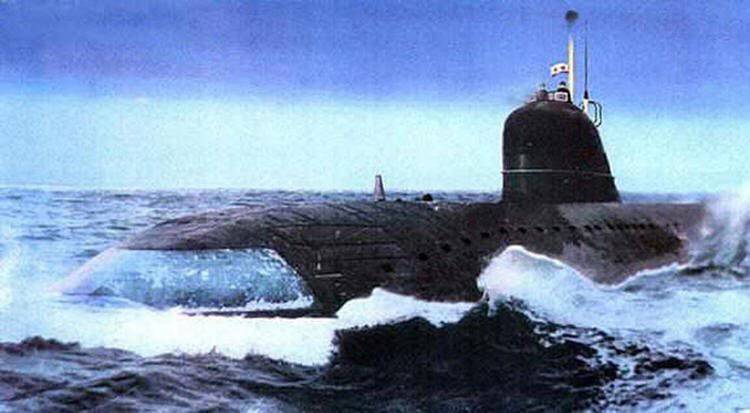
The situation with the transfer of K-133 and K-116 from the North to the Far East was fairly obvious. K-133 belonged to the firstborn of the Soviet submarine shipbuilding, the 627 (A) submarine was of the same age as the American Skate and Triton. But unlike the first generation of American boats, which were in many ways experimental structures for developing new technologies. At the same time, the first Soviet nuclear submarines were full-fledged warships - armed to the teeth, with a wide range of working depths and high underwater speed. Thanks to the drop-shaped hull optimized for scuba diving, our 627 (A) was not inferior in speed even to the legendary Triton. As for reliability, it was equally bad on both sides of the ocean. The mechanisms, layout and first generation nuclear submarine reactors were not distinguished by perfection and safety.
But if the "Triton" could, then ... the road will be mastered by walking!
With the second boat, the situation was similar. K-116 - nuclear submarine cruiser with cruise missiles. It belongs to the 675 project, belongs to the first generation of Soviet nuclear submarines. The underwater ship is fast enough and autonomous for world tours. In addition to the torpedo weapons, K-116 carries in its womb eight anti-ship missiles of the P-6 complex.
In contrast to the experimental "Triton", which, although it was a powerful boat, existed in a single copy, the K-116 is a completely serial design, one of the 29 built nuclear ships of the 675 project.
In the icy cold, February 2 1966, the multi-purpose K-133 submarine and the K-116 SSGN left the base in Western Face and headed for the open sea. Thus began the unprecedented group campaign of atomic-powered Soviet naval forces to the other end of the Earth. Getting out into the Atlantic, the boats crossed the ocean in full swing from North to South. Like two shadows, steel “pikes” passed through the Drake Strait and climbed along the west coast of South America, then, one after the other, the submarines crossed the vast expanse of the Pacific Ocean from East to West.
On March 26, a month and a half after leaving West Litsa, both boats safely docked off at the pier in Krasheninnikov Bay in Kamchatka.
For 52 running days, nuclear ships passed 21 000 miles (a distance almost equal to the famous Triton route). North Sea residents had an exceptional task: to cross two great oceans diagonally, never to the surface. At the same time not to be left behind, nor to come off, not to lose sight of each other. And, most importantly, go unnoticed by the anti-submarine forces of other states. The route ran along parts of the ocean poorly explored by hydrographs, in southern latitudes unusual for us, through the Drake Strait, which is famous for its fierce storms and difficult navigation conditions.
The whole trip took place with maximum observance of measures to ensure secrecy - as a result, not a single anti-submarine ship or a deep-sea NATO tracking station detected a detachment of Soviet submarines - the appearance of new nuclear ships in Krasheninnikov Bay was a real surprise for foreign naval intelligence.
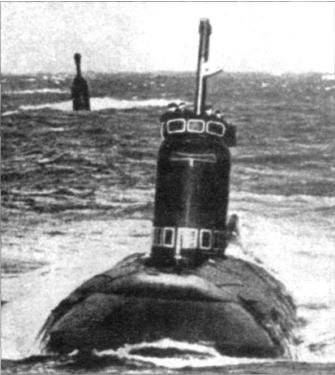
Sailors from the crew of the nuclear submarine K-133 throughout the expedition kept a handwritten journal "Chronicle of the campaign, or 25000 miles under water." Here are collected poems, essays, drawings of submariners - the best masterpieces created by the talent of the ship's poets, artists and writers during the legendary campaign. Currently, a rare journal is kept in the Central Naval Museum in St. Petersburg.
Afterword. By the time the K-133 nuclear submarine was excluded from the Navy in 1989, the submarine had passed 168 thousands of miles in 21926 running hours.
The fate of K-116 turned out to be much more tragic - a radiation accident that broke out on board forced the boat into the reserve back in 1982. More in the sea she did not go. In total, over twenty years of operation, K-116 managed to pass 136 thousands of nautical miles in 19965 running hours.
http://www.deepstorm.ru/
http://atrinaflot.narod.ru/
http://navsource.org/
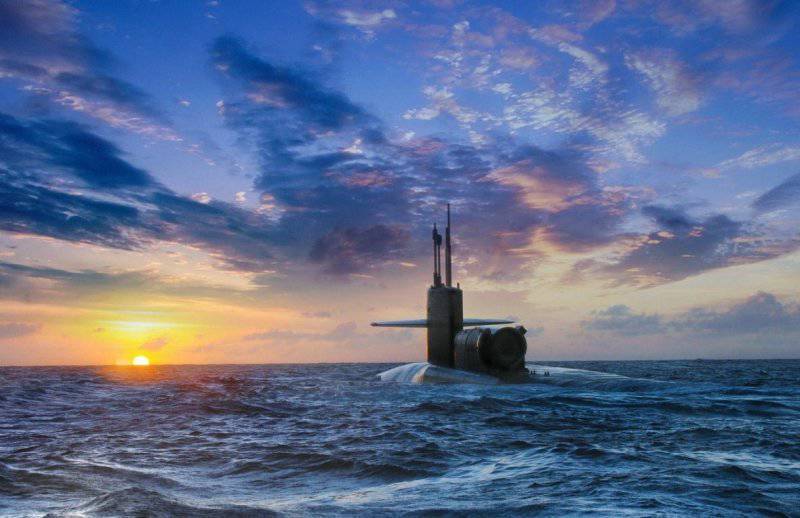
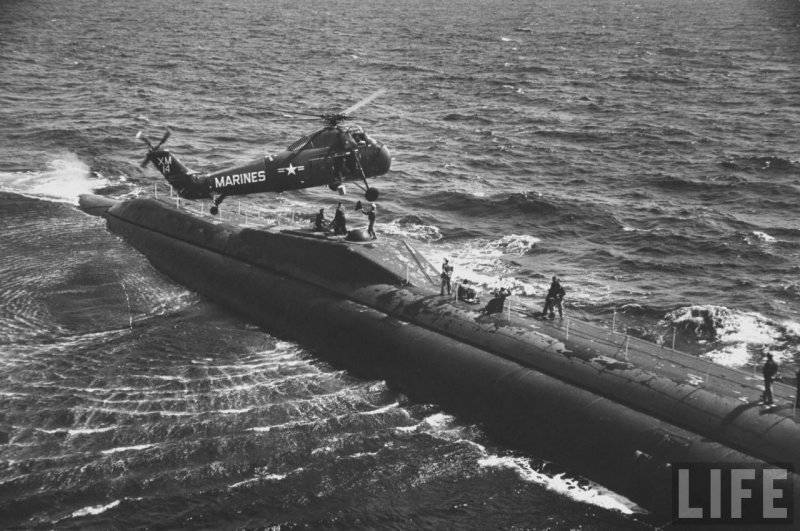
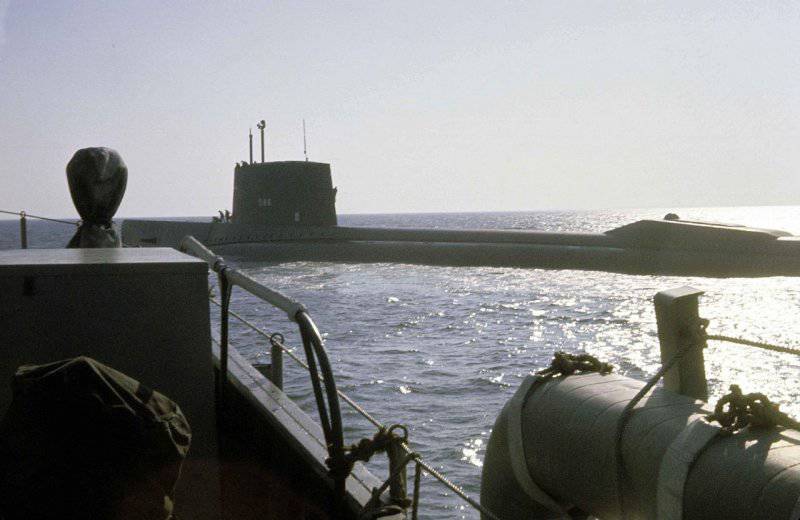
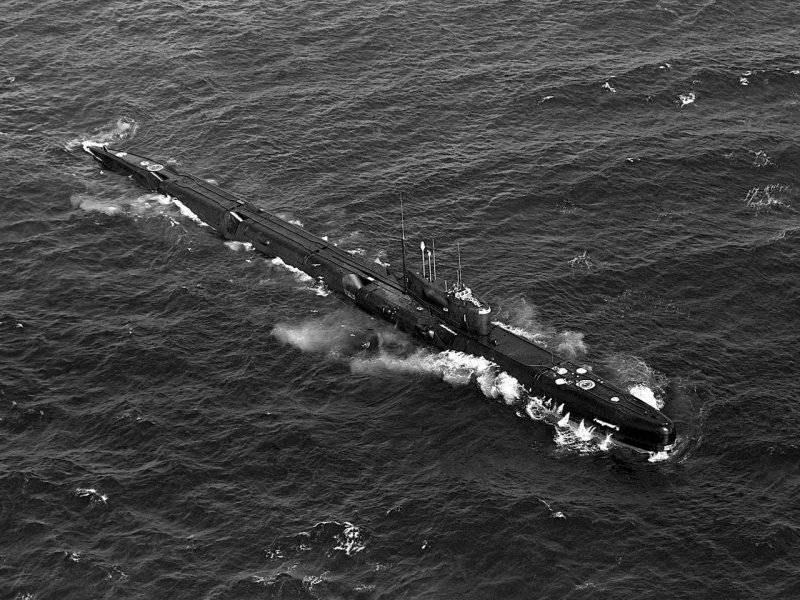
Information